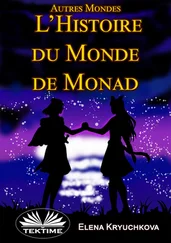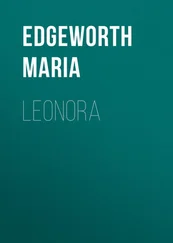If he could hear all the conversations buzzing around, no doubt they would not seem in the least eccentric to him, just as it doesn’t appear odd that a person might be born with green hair: ‘I have just returned from Ravello, where I rented a villa for the summer’; ‘I went, as I do every year, to the Wagner Festival in Bayreuth, famous for exerting such a major influence over the Symbolists’; ‘I bought myself a flat on the East River with a view over the Hudson’; ‘I would like to bring my horses over to Mexico, but there’s no point because here the stable hands are so poor that they’d probably eat them’; ‘That’s a vile lie, they treated their horses so well throughout the years of the Revolution’; ‘They’re hungrier now’; ‘Do you know where that phone with a receiver like a lobster that Edward James has came from? From a dinner when he and his friends amused themselves by throwing lobster shells at the ceiling and one fell back and landed on the telephone. James then told Dalí to make him a handset in the shape of a lobster’; ‘There’s nothing more Surreal than James’ house in Monkton. In fact it is the most notable example of three-dimensional Surrealism’; ‘Edward James paid to have all eleven volumes of his poetry bound and published. And the only thing anyone ever remembers about them is the manufacturer’s typography and the luxury of their binding’; ‘I knew that in 1938, Oxford University Press published his book The Bones of my Hand ’; ‘What you may not know is that Stephen Spender wrote that it was nothing but the whim of a millionaire. After that, James never published again, other than a few articles in Lord Beaver-book’s paper, The Evening Standard. ’
James goes further than the multi-millionaires who compensate for their lack of creativity by their purchases, for he does indeed have a certain talent. He hires architects and decorators to make over his houses in England. Fabulously rich, he motivates artists such as Stravinsky, Christopher Isherwood, Aldous Huxley and George Balanchine, who after making ruthless use of him cast him aside like a worn sock. Perhaps that is why James always leaves socks behind him wherever he goes.
At the tender age of twenty-one, the young heir exchanged Oxford for a permanent ongoing party. New York, London, Paris, Rome and Berlin are the main points of his compass. Now he happens to be in Mexico, and the one person he notices, the first he makes a beeline towards, parting a way through all the other guests, is Leonora.
‘I came because of you.’
WHEN EDWARD JAMES ARRIVES at Leonora’s dark house he sees The Giantess standing on the easel, and immediately knows he is standing in front of a masterpiece. Leonora explains that the painting is the fruit of her reading of Jonathan Swift:
‘She is an inhabitant of the Island of Brobdingnag.’
‘She looks as if she might arise from the beginnings of creation, from chaos. Look at the despair of those men struggling to save themselves,’ James comments.
‘The ones out there at sea rowing?’
James continues, utterly absorbed: ‘Your giantess shelters a tiny egg in her hands. In comparison to her body, her hands are diminutive. Beneath her feet are horses and humans bearing bows, arrows and lances, fleeing in terror. They have never seen a sight remotely like this before. Leonora, you are the giantess in your painting,’ declares James. ‘I’ll buy it from you!’
Gaby and Pablo return from school and, on seeing The Giantess on the easel, ask their mother if it is her self-portrait from when she was a little girl, because her head is circled with stardust; and pelicans, gulls and ships sally forth from her white cape. Nothing could be more natural than for the children to come in and interrupt her, bumping into her easel, borrowing her paints — most especially Pablo, who without more ado helps himself to her paintbrushes.
‘Who is that man, Mama?’
‘He is an Englishman who flew in and landed on the flat roof of our house.’
‘Is he an Englishman or a swan?’
‘If I tell you he flew all the way here, he could as well be a migrating bird or a purple heron.’
Edward James is enchanted by the tale of the purple heron, which the Mexicans call an imperial bird. ‘Children always tell the truth, and it’s clear that I look very good painted as the heron. But Leonora, the light is atrocious,’ he commiserates.
‘It doesn’t matter. In any case, as soon as my children get in from school, I stop painting.’
‘Everyone talks about the light in Mexico, but it’s as if it doesn’t exist for you.’
‘It’s that I wanted so much for Europe to be my children’s homeland.’
‘But you still stayed here, didn’t you?’
‘I never actually decided to, it just happened that way.’
The general interest US magazine Town & Country publishes a photograph of The Giantess (also known as The Guardian of the Egg ) alongside a story called Un Jour by Jean Malaquais, whom Leonora recalls having seen walking around Paris looking like a vagrant. Max had mentioned how: ‘The idealism of this Pole enchants me.’ Vladimir Lalacki, who wrote about the concentration camp where he was imprisoned, is also now living in Mexico.
‘Look at this! Time and Art News magazines are reviewing your work. Where do you keep the articles that get written about you?’
‘I don’t keep them. Maybe Chiki does, I don’t know.’
‘The magazine Horizon has a litany of eulogies to you. Did you see that Victor Serge wrote of how your painting stirs his emotions because it reflects “an adolescent but luminous interior life”? Gustav Regler also reproduces two of your paintings.’
Leonora is flattered by the article because the novelist Regler fought in the Twelfth International Brigade in Spain, and, now he is in Mexico, has grown passionate about its pre-Hispanic cultures.
Leonora appears in the catalogue of the Bel Ami International Art Competition, next to Salvador Dalí, Paul Delvaux, Max Ernst, and Ernst’s new wife, Dorothea Tanning.
In February 1950, the Clardecor Gallery, which specialises in interior design, offers her its wall space.
‘A furniture shop?’
‘Leonora, this is Mexico ,’ responds Edward.
‘It’s not exactly what you deserve, but at least it can be an opportunity for the Mexicans to sit up and take notice of you,’ adds Esteban Francés.
Inés Amor, a tiny woman with ankles so slender they could belong to a canary and who smokes at least as much as — if not more than — Leonora, scrutinises every picture she brings into Clardecor minutely. She is the director of the Gallery of Mexican Art. ‘This woman certainly knows how to sell,’ Jesús Bal y Gay whispers in Leonora’s ear. The majority of her clients are from the United States. In spite of her fragile physical appearance, she has a will of iron. ‘You will see how the Mexicans are going to treat you once you have me at your side,’ Inés comforts Leonora as she complains of the xenophobia that surrounds her.
‘Unless I turn into a chichimeca native, one of those the Aztecs fought for centuries, I don’t think they’ll ever pay the least attention to me. I have never painted a single, solitary slice of a water melon.’
‘Things are going to change once I am involved.’
And so it comes to pass that Leonora is recognised as an artist who belongs to Mexico and is included in the exhibition ‘A Portrait of Contemporary Mexico’, sponsored by the National Museum of Modern Art and National Fine Arts Institute. When Inés Amor inaugurates her first solo show on the Calle Milan, the critics talk of her technique and of the mysterious nature of her subjects: Margarita Nelken, a refugee from the Spanish Civil War, writes in Excelsior that it is the best exhibition on show in Mexico. Antonio Ruiz, known by the nickname of El Corcito (the Buck) because of his resemblance to an eponymous bullfighter, declares that at long last he has found an identical twin soul.
Читать дальше












